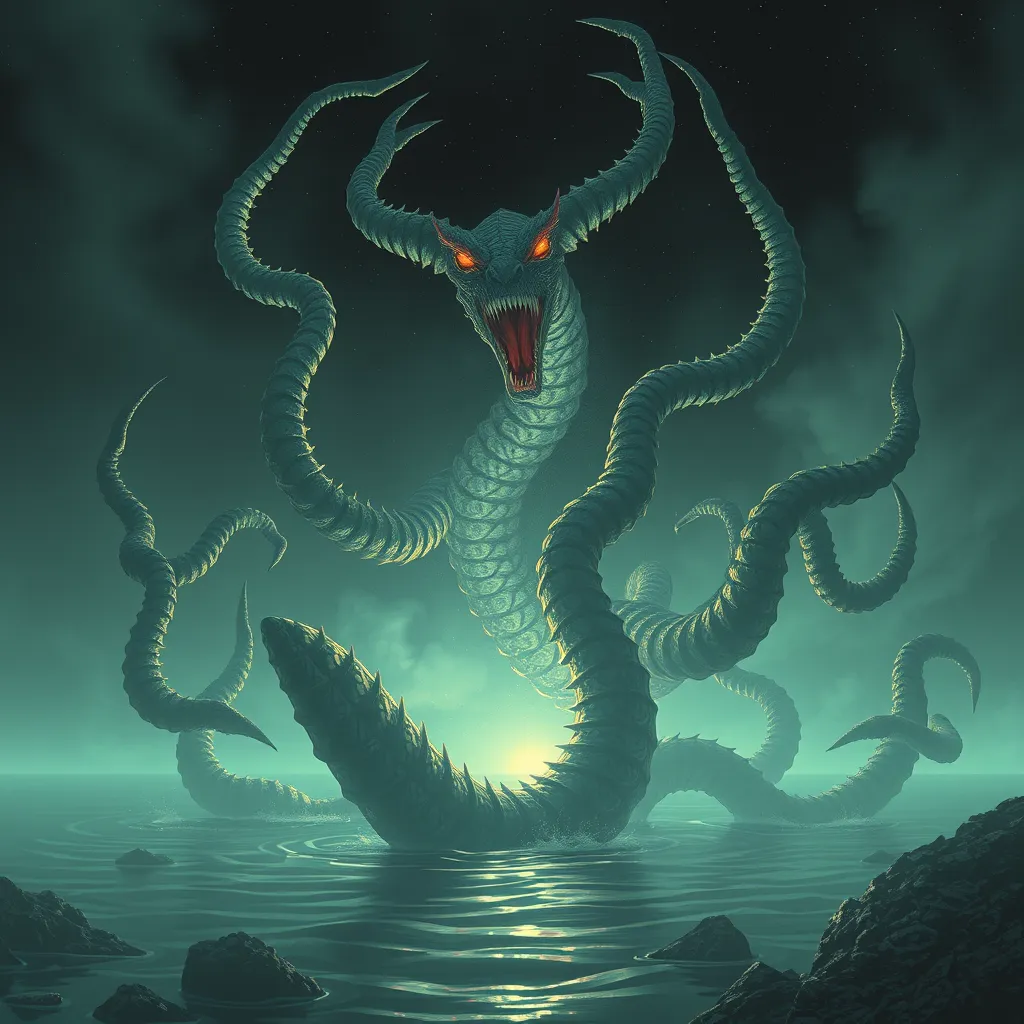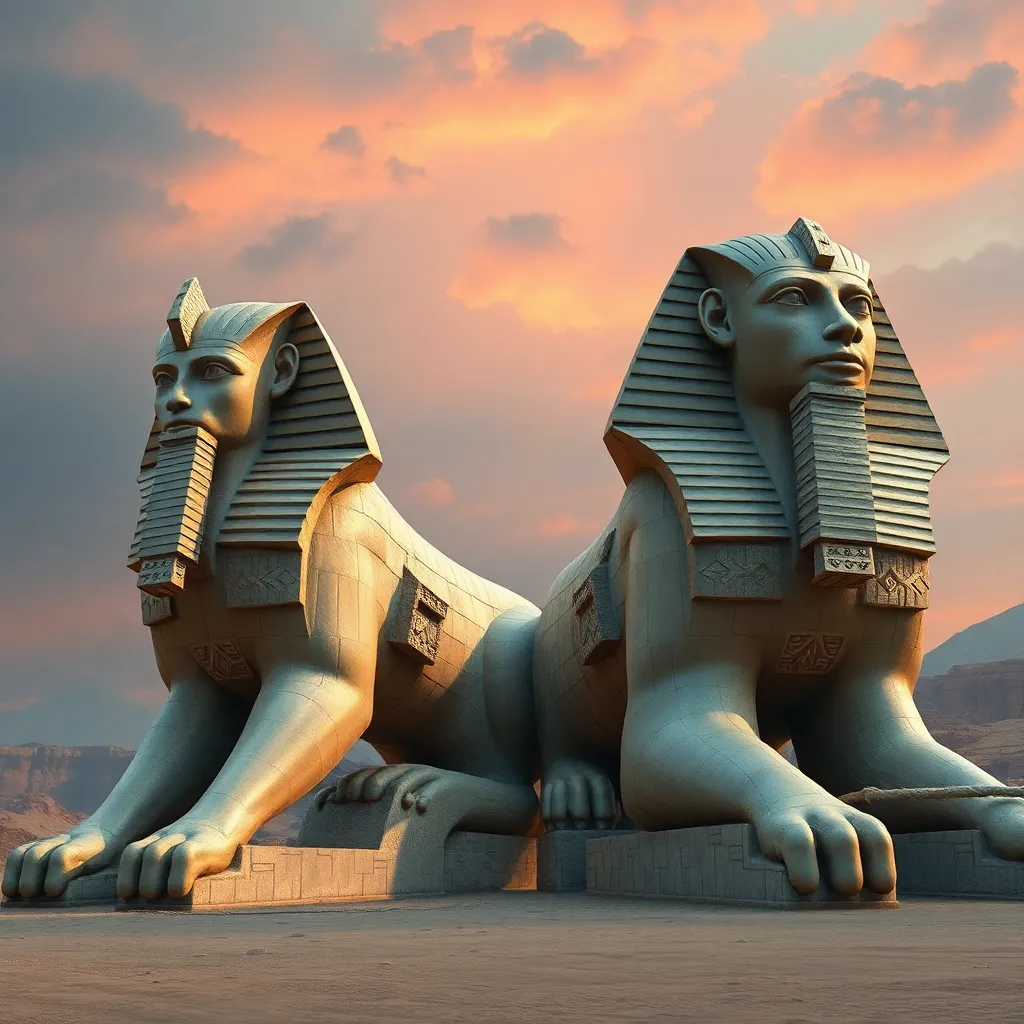Hydra in Modern Literature: Exploring the Monster’s Impact on Fantasy and Science Fiction
I. Introduction
The Hydra, a multi-headed serpent from Greek mythology, is a creature steeped in symbolism and significance. Its origins can be traced back to ancient myths, particularly in the tales of Hercules, where it is portrayed as a formidable foe. The Hydra’s ability to regenerate two heads for each one that is cut off serves as a powerful metaphor in literature.
This article aims to explore the Hydra’s impact on contemporary fantasy and science fiction, delving into its representations and reimaginings throughout modern storytelling. By examining its symbolism and the themes it embodies, we can better understand its role in literature today.
II. The Hydra in Classical Mythology
In classical mythology, the Hydra is most famously known for its encounter with Hercules. As one of his Twelve Labors, Hercules was tasked with slaying the beast, which lived in the marshes of Lerna. Each time Hercules decapitated a head, two more would grow back, making the task seem impossible.
Symbolically, the Hydra represents the challenges that seem insurmountable. Its many heads can be interpreted as the multifaceted nature of challenges in life, where tackling one problem often leads to the emergence of others. This theme of regeneration reflects the persistence of obstacles, which resonates deeply with the human experience.
As storytelling evolved, the Hydra transitioned from myth to modern narratives, continuing to symbolize the eternal struggle against adversity.
III. The Hydra as a Literary Archetype
The Hydra has become a literary archetype that embodies various characteristics and themes in literature. Key attributes of the Hydra include:
- Multiple heads representing complexity and chaos
- Regenerative abilities symbolizing resilience and the cyclical nature of challenges
- Association with darkness and danger, often embodying evil or malevolent forces
As a metaphor, the Hydra illustrates the challenges and obstacles in life. It signifies that overcoming one issue may lead to the emergence of new ones, emphasizing the relentless nature of struggle.
The duality of the Hydra—destruction versus regeneration—further enriches its narrative potential. It can be seen as a force of chaos that must be confronted and defeated, yet it also embodies the idea that every defeat can lead to renewal and growth.
IV. The Hydra’s Reimagining in Fantasy Literature
In contemporary fantasy literature, the Hydra has been reimagined in various forms. Notable examples include:
- Rick Riordan’s “Percy Jackson” series: The Hydra appears as a formidable foe, representing the challenges faced by young heroes.
- J.R.R. Tolkien’s “The Hobbit”: While not directly named, the themes of multi-headed monsters can be seen in the various creatures that challenge the protagonists.
- Brandon Sanderson’s “Mistborn” series: The Hydra-like creatures reflect the complex nature of the world and its magic systems.
In these narratives, the Hydra contributes significantly to world-building and mythos, enriching the story’s depth and complexity. It often serves as a catalyst for character development, pushing protagonists to confront fears, grow, and evolve.
V. The Hydra in Science Fiction
In the realm of science fiction, the Hydra motif often represents scientific experimentation gone awry. The creature’s regenerative properties can symbolize the unforeseen consequences of tampering with nature. Examples include:
- Mary Shelley’s “Frankenstein”: Although not a Hydra, the creature’s creation mirrors the theme of unintended consequences of scientific ambition.
- H.G. Wells’ “The Invisible Man”: The themes of transformation and regeneration resonate with the Hydra’s symbolism.
- Various modern adaptations: Films and series often feature creatures reminiscent of the Hydra as a metaphor for genetic manipulation and its dangers.
The exploration of evolution and adaptation is central to many science fiction narratives, showcasing the Hydra as a representation of humanity’s struggle against its own creations.
VI. Cultural Reflections: The Hydra in Modern Media
The Hydra has found its way into various forms of modern media, including films, video games, and graphic novels. Examples include:
- Marvel’s Hydra: A villainous organization symbolizing the complexities of evil and corruption.
- Video games like “God of War”: Players encounter hydra-like creatures reflecting the mythological roots of the monster.
- Graphic novels: The Hydra often appears as a metaphor for societal issues and personal battles in the narratives.
The portrayal of the Hydra across media formats highlights its versatility as a symbol. Its influence on popular culture endures, resonating with audiences who recognize its deeper meanings.
VII. The Hydra’s Legacy and Continuing Relevance
The Hydra serves as a reflection of modern societal fears and challenges. In an ever-changing world, the idea of facing multiple adversities resonates strongly. The ongoing evolution of the Hydra in literature and media signifies its relevance in contemporary storytelling.
Mythological creatures like the Hydra play a crucial role in understanding human experiences. They provide a lens through which we can explore our fears, challenges, and the complexities of our existence.
VIII. Conclusion
In summary, the Hydra has left an indelible mark on both fantasy and science fiction, symbolizing the multifaceted challenges we face in life. Its enduring significance in literature and media speaks to the power of mythological monsters in storytelling.
As we continue to explore the Hydra in various contexts, we are reminded of the vital lessons it imparts about resilience, the nature of challenges, and the human spirit’s ability to confront its fears.
Encouraging further exploration of the Hydra in literature and media can lead to deeper insights into our culture and the universal themes that bind us all.



